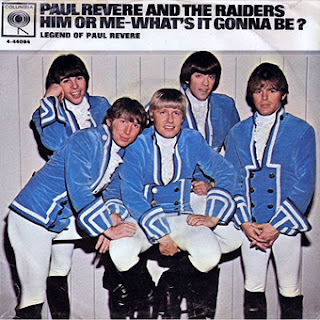Day five of our tribute to Blue Thumb Records and I have a selection that will please my brother, as it is Tyrannosaurus Rex's (later known as T. Rex) release of “Ride a White Swan.” Being that it is a Thursday, a day we honor “Repeats and Threepeats,” “Ride a White Swan” was released four times in the United States and fits that category as well.
Its first issue was the version that I own. I remember seeing the album “A Beard of Stars” in the cutout bin at a local discount store – probably F.W. Woolworths in 1972, and my brother Chuck suggested that I purchase it and I did. The album was originally issued in the US in April 1970 and was later re-issued with a bonus 45 of “Ride a White Swan” backed with “Is it Love.”
The album was a Capitol pressing and was cutout due to Blue Thumb Records switch from Capitol Records distribution to that of Gulf+Western/Famous Music Corporation. It was a good time to get Blue Thumb Recordings as Capitol had to divest its stock of the label. “A Beard of Stars” was released in Britain on the Regal Zonophone label and was the second album by Tyrannosaurus Rex to be issued in the US on the Blue Thumb imprint.
While Regal Zonophone had the album, “Ride a White Swan” was released in the UK on the band's new label, Fly Records. It was the company’s first single and the catalog identification was fitting as “BUG-1.” The new single, which was officially released in the UK in October 1970, represented a change of names for the band with their shortened moniker of “T. Rex.” The single in the UK had two songs on the B-side: “Is it Love” and a cover of the Eddie Cochran hit “Summertime Blues.”
In the US, Blue Thumb issued two commercial versions of the single in 1970. Both were released in December, both bore the “Tyrannosaurus Rex” name, and both had the same number #7121. This number also appeared on the some of the later pressings of bonus singled that was issued with “Beard of Stars”; however, the proper catalog number of the promo single was SP-6115.
While the commercial version of the single like the promo had “Is it Love” as the B-side, Blue Thumb reissued the single with “Summertime Blues” as the flip. Perhaps this was done to capture the momentum of The Who’s version of the song that was released months earlier. The second version of the single can be identified by the A-side’s label as it included a star indicating the plug side of the single.
While the single was a smash hit in the UK charting in the number #2 position in early 1971, it failed to enter the Top 40 in the US and Canada. The US release peaked at #76 and the Canadian version did a little better at #48.
A fourth version of the song was also issued in December 1970. This was as an album cut on the band’s fifth album which was simply titled “T. Rex.” Issued on Fly in the UK, the album was licensed to Reprise Records in the United States. What interest the Blue Thumb single may have generated probably benefited Reprise rather than Blue Thumb.
Marc Bolan recorded the vocals, four guitar parts, and the bass. There is a rhythm maker tambourine and hand claps keeping rhythm. I’m not sure if Micky Finn played on this recording – if he did, he only provided the hand claps. A very sparse string arrangement was also added. Tony Visconti, who has worked with David Bowie, The Moody Blues, Thin Lizzy, The Kaiser Chiefs, among others, produced the single. Although the band had recorded four albums to this point, “Ride A White Swan” was pivotal in jump starting the careers of Marc Bolen and T. Rex.


















































